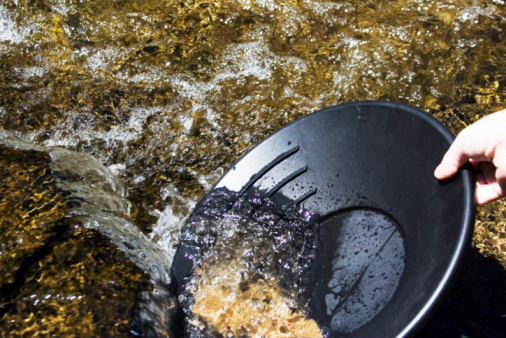#1. Failing to Dig Deep Enough There is a lot of sense in the words, “you gotta dig deep, if you want to succeed”. Those who are new to the act of gold prospecting are often very excited and want to start the panning process as quickly as possible, but this can yield less-than-stellar results. Instead, it is wise to dig beyond the loose material at the surface. Gold is heavy and is likely to settle. So, while you may find some gold in that loose material, it generally won’t be nearly as much as what you would find if you dug a bit deeper.
#2. Spending Big Bucks Up Front You don’t need much to get started with gold panning, so don’t go out and invest in the best of the best – expensive pans, sluices, dredges, etc. You only need a modest pan, a couple of five gallon buckets, a classifier, and a bottle to store your gold. You might also want to invest in a good pair of rubber boots, but otherwise, you can do a lot with a very little.
#3. Beating Up on Mother Nature The great part about gold panning is that Mother Nature provides a gift, and you don’t have to cause much disruption to the environment to get it. Unfortunately, bad behaviors by a few have caused a lot of trouble for the responsible majority, when it comes to gold prospecting.
#4. Failing to Test Before Digging in Rather than digging large amount of soil right away, it is better to do small test areas, to determine where the best concentrations of gold are. This prevents large amounts of wasted time, in the long run. It also produces the best results, because you will dig in areas that you know contain gold deposits.
#5. Coming in Uneducated Though it is not necessary to take classes in order to pan properly, it is wise to do a little research into how gold accumulates within in the Earth, and where, in relation to the body of water, it is most likely to be heavily concentrated.

